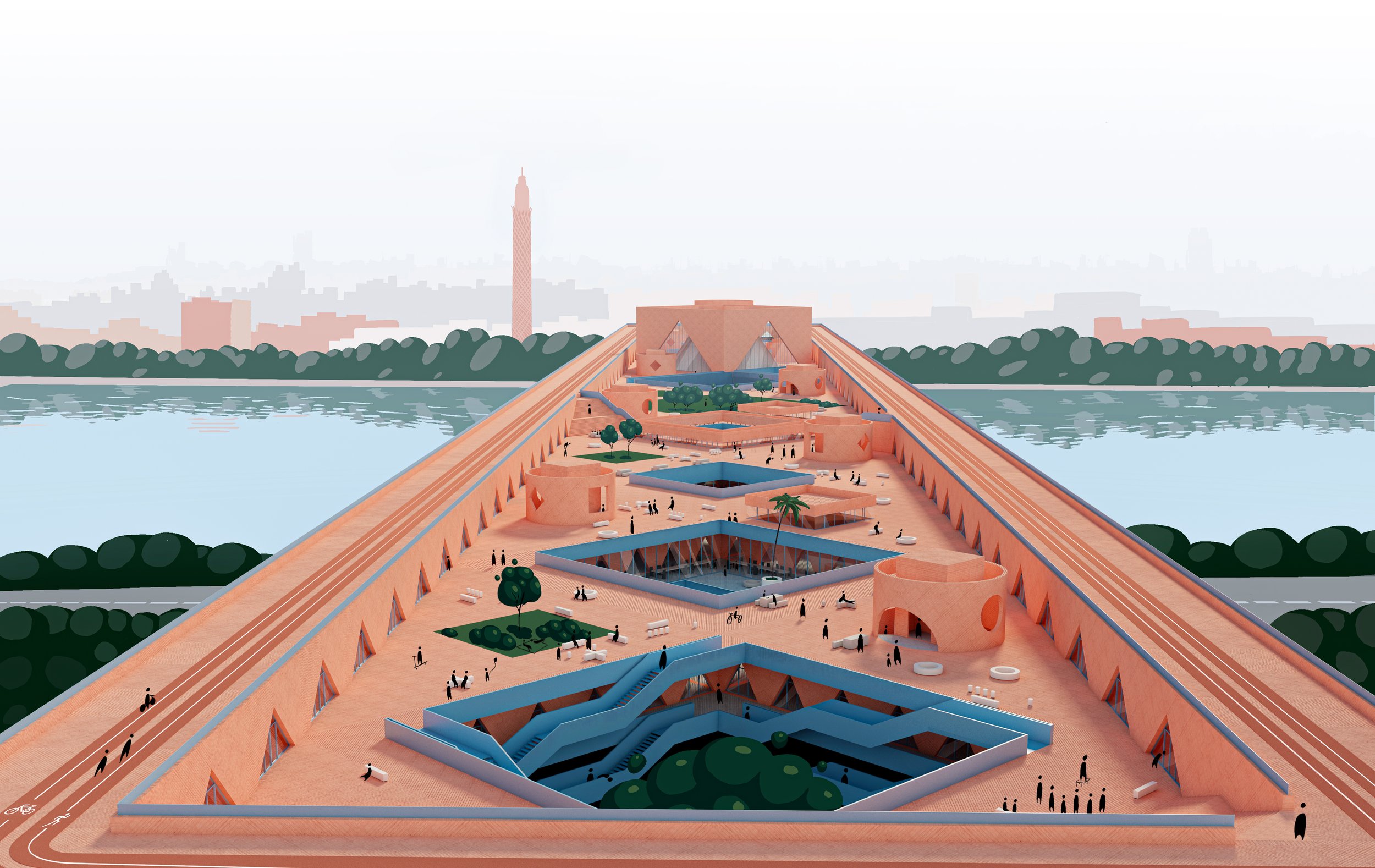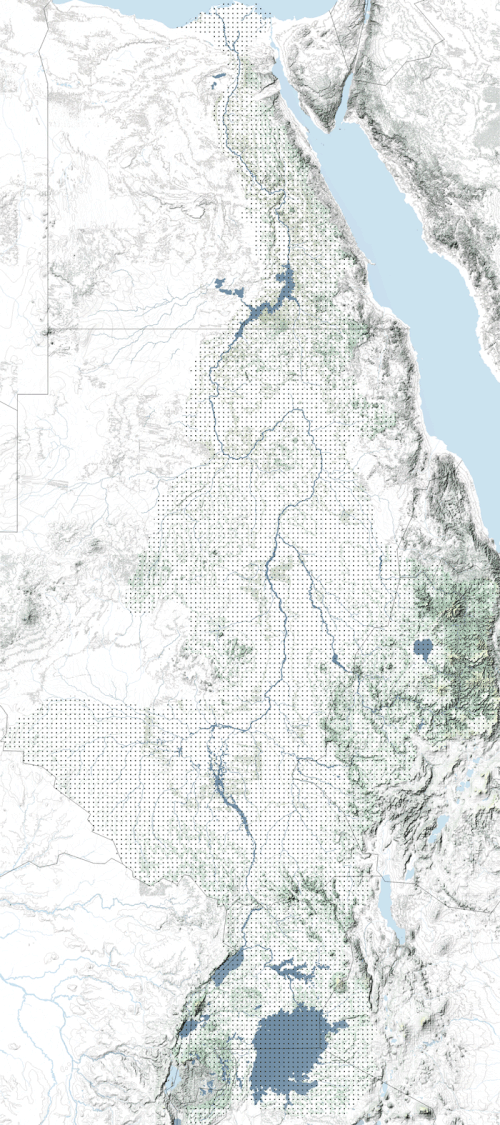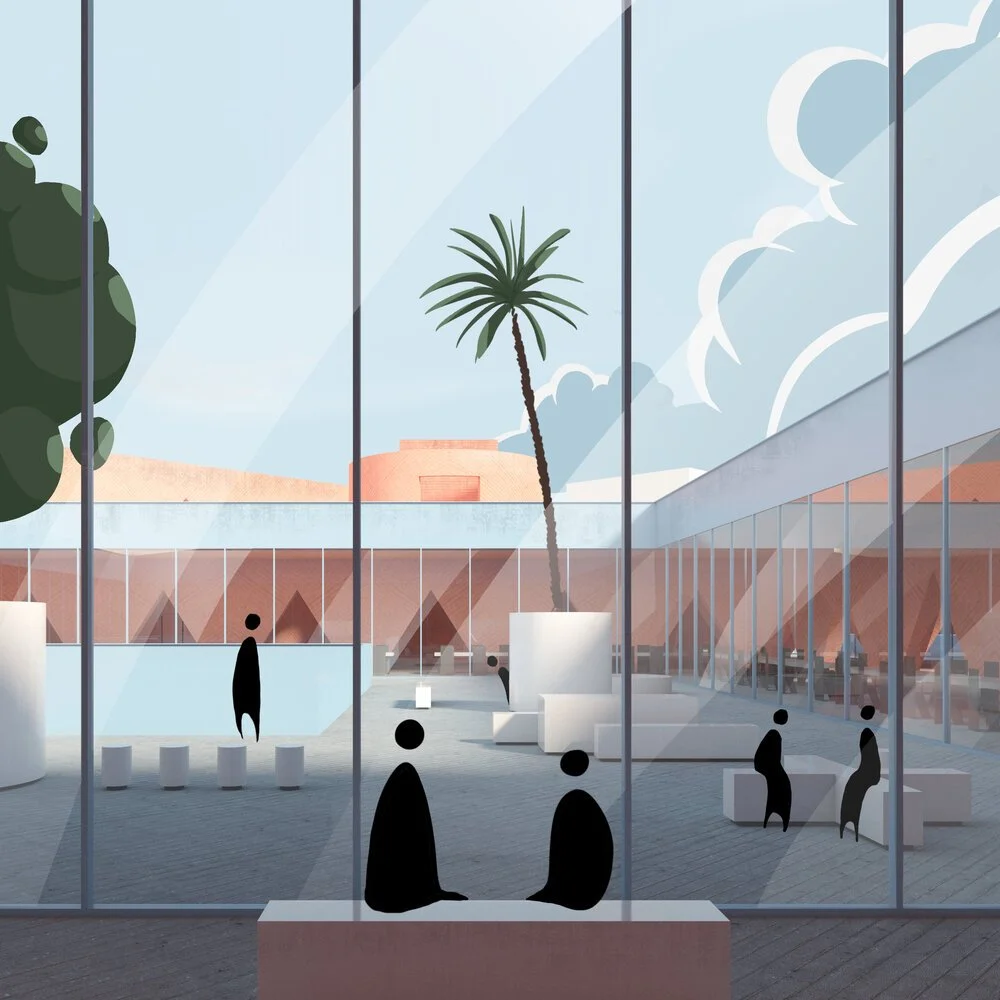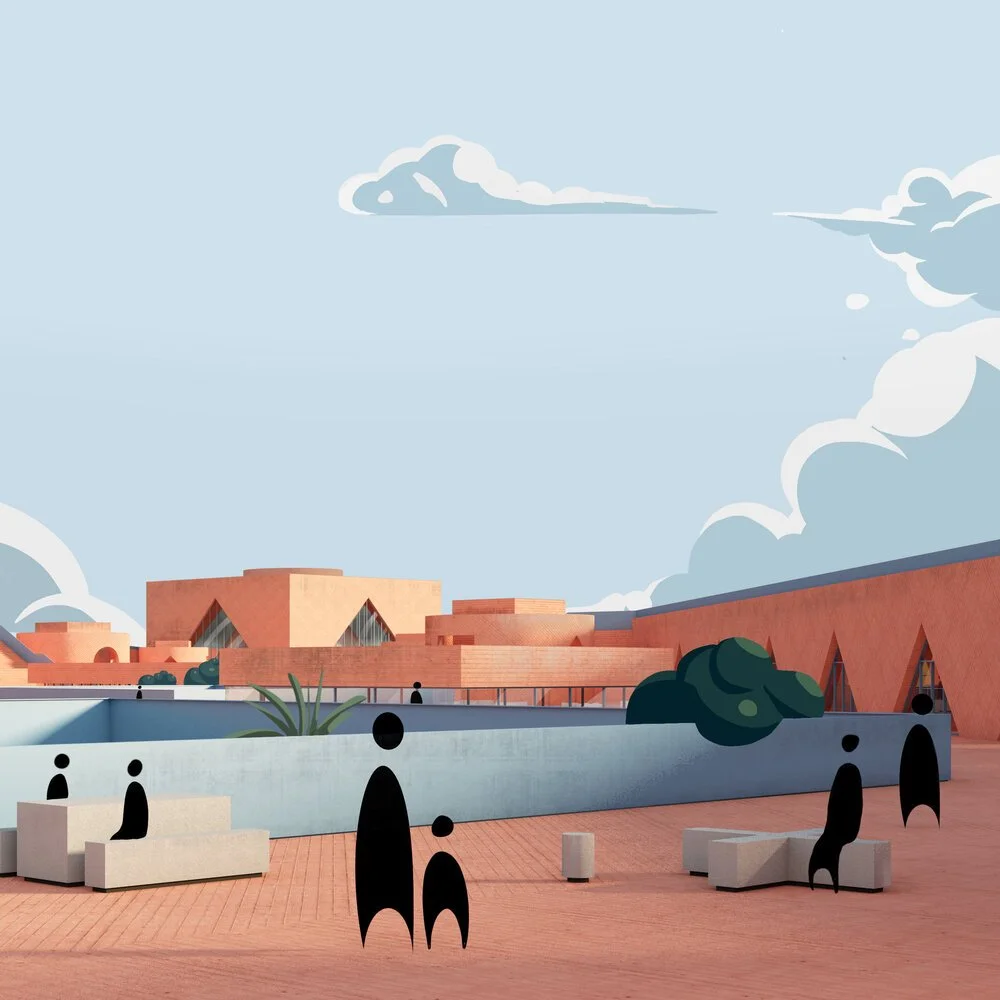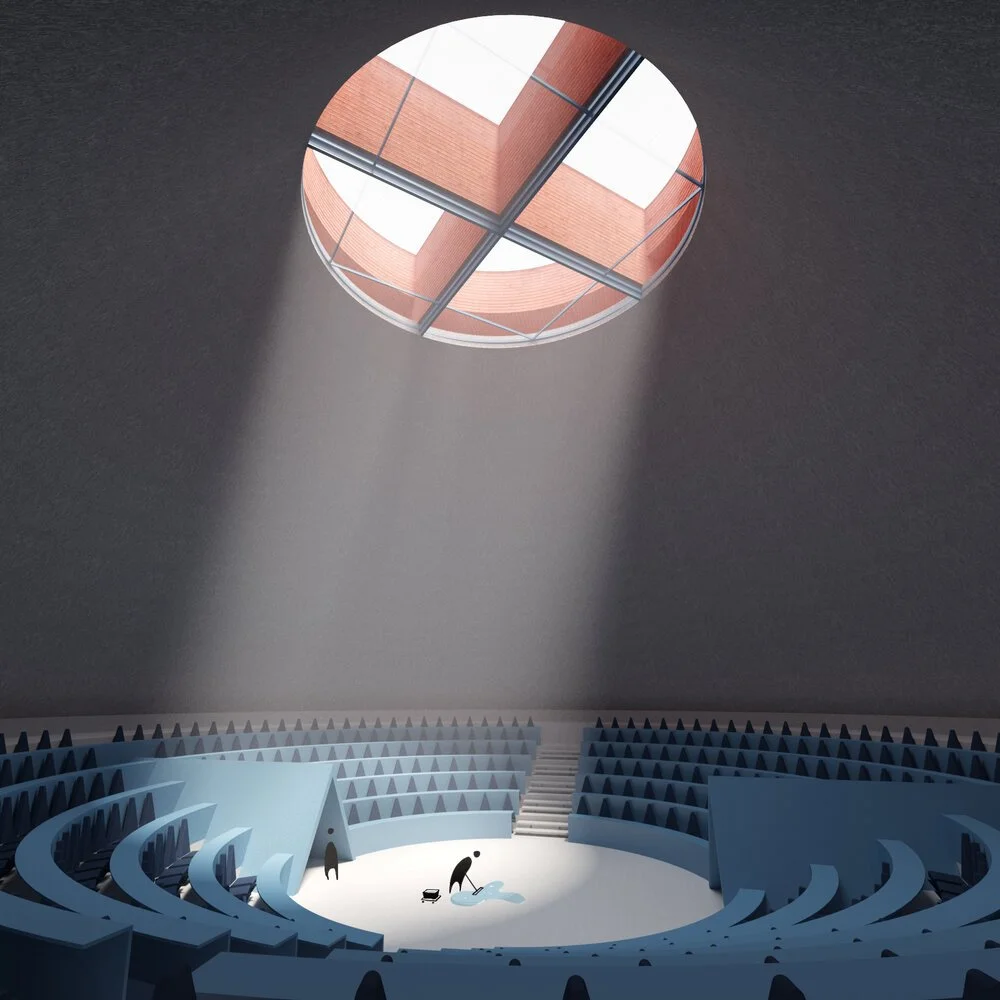Embassy of the Nile
Embassy uniting the human and non-human agents of the Nile river
2020 Competition, Shortlist Rifat Chadirji Prize 2020
The Nile as an Independent Territory: The Nile River flows through 11 countries, supporting diverse ecosystems and about 300 million people. However, competing national interests and colonial histories have led to unequal resource distribution, ignoring non-human life dependent on the river. Climate change intensifies this imbalance with worsening rainfall anomalies. Current water-sharing systems are ill-equipped for future challenges.
We propose declaring the Nile an independent entity, akin to New Zealand's Whanganui River, granting it rights over its resources and the ability to negotiate its usage. How can the Nile assert its interests while balancing human and ecological needs? These are the challenges The Embassy of the Nile seeks to address.
The Embassy of the Nile : Situated within the independent Nile's domain, The Embassy of the Nile facilitates dialogue between the river and its 300 million dependents through three core components: Sensing Network, The Nile Institute, and The Nile Congress.
Sensing Network : A decentralized sensor network tracks the river's 6,700-km span, monitoring water levels, quality, biodiversity, and precipitation. Sensors on land, water, air, and mobile devices act as a neural system, enabling the Nile to perceive and communicate its state.
The Nile Institute : Data from the Sensing Network is aggregated at The Nile Institute, where it is combined with satellite data and climate models. This processing makes the river's behavior intelligible to humans, enabling meaningful dialogue.
The Nile Congress: The Nile Congress is a forum where stakeholders negotiate resource use based on reliable river data. Human and non-human representatives from the 11 basin states engage in mediated discussions, balancing ecological and societal needs.
Structure: The Embassy of the Nile is a bridge spanning the river, supported by four pillars 100 meters apart. Its 10.4-meter-high bailey trusses form a rigid structure enforced by diagonal warren trusses. Cantilevered ends house the East and West entrances.
Good Neighbor: Beyond diplomacy, the Embassy is a public space featuring cultural institutions, playgrounds, gathering areas, and a rooftop promenade with a running track, blending Cairo's dynamic culture with its geopolitical mission.
